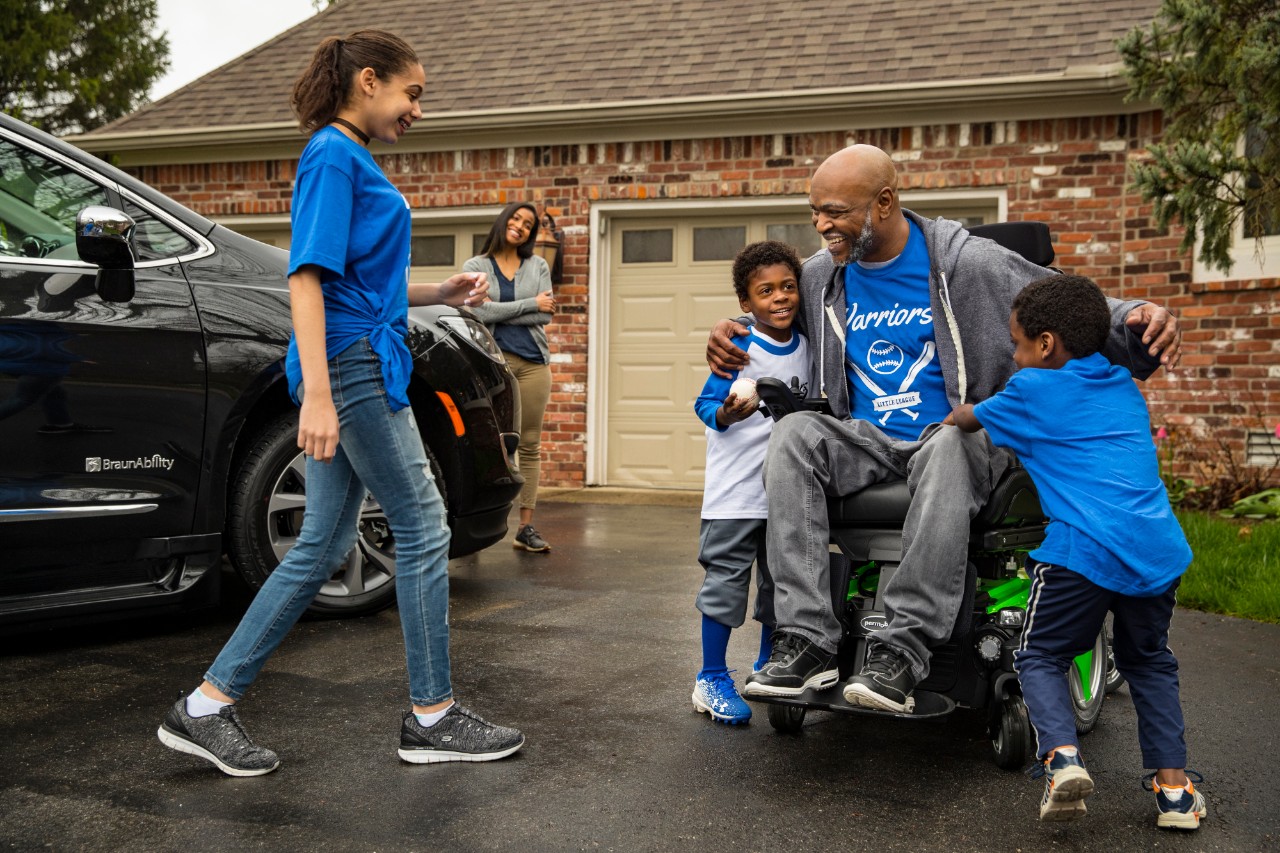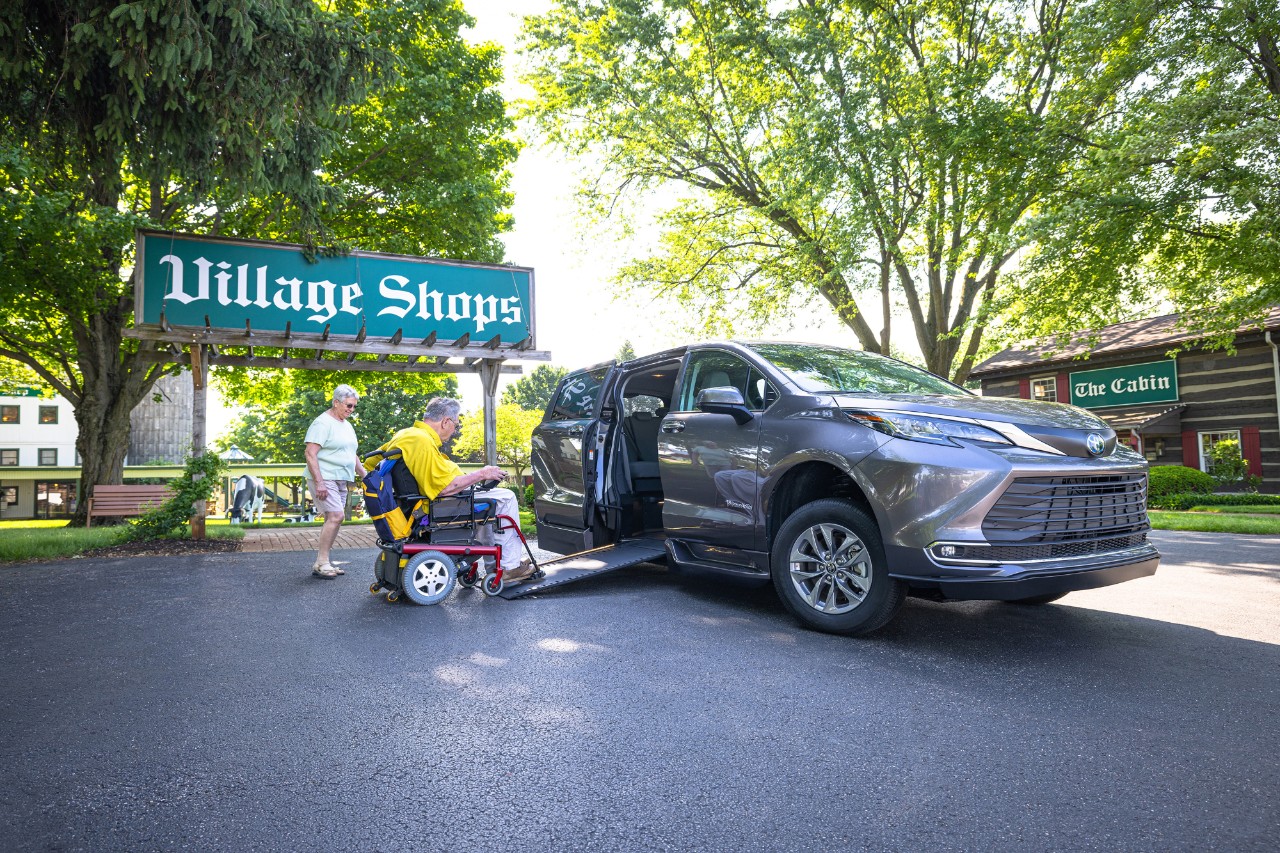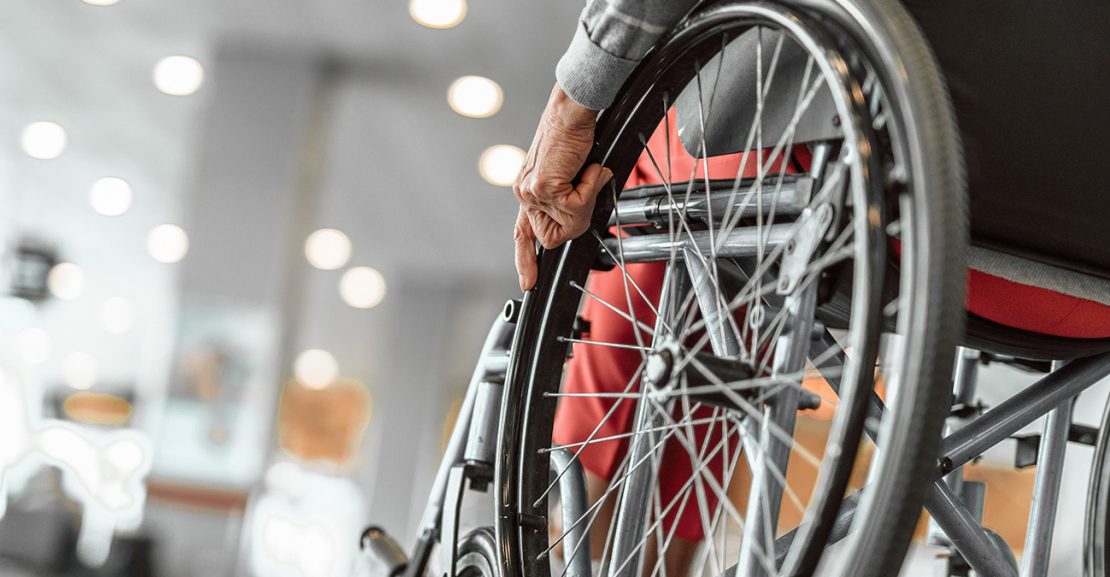
Transportation Solutions for Active Lifestyles
If you have worked in the mobility industry for any length of time, you have probably seen this: A recently injured man rolled across the parking lot of the store where we offer accessible vehicles. He approached with a beaming smile and began to extol the virtues of his brand-new, amazing power chair. It had a powerful rear-wheel-drive base with every power seating function imaginable: tilt, recline, elevating legs, elevating seat.
It was one huge, long, wide, and tall wheelchair. He sat up so high that he and I were almost eye to eye, and he didn’t even have the seat elevated. Then he asked, “Where are your minivans?” He was not going to like what he found.
That man envisioned himself driving from his wheelchair in a sleek, relatively economical minivan. The only vehicle he was going to fit into now was a full-size accessible van with a lowered floor and a raised roof. It will not be economical to drive, and he will not fit into any garage or parking structure.
Where did his transportation plan get off track? The answer lies in the seating evaluation done several months earlier.
Start with the Seating Evaluation
Why is that evaluation the critical time to consider transportation integration issues? A power chair and an accessible vehicle are likely the most expensive pieces of assistive technology that a person will purchase. Once they are ordered, it is very difficult to make major modifications to either one. As providers, we need to get the equipment done right the first time.
The generally accepted wheelchair and seating evaluation recommend equipment to help a person to regain mobility using a device that enables the person to “ambulate” or move in some sense similar to the ability of a person without an impairment. In reality, this interpretation falls far short of the mobility we take for granted as able-bodied ambulators: namely, the ability to move freely.
People who are truly mobile go where they want and when they want. Mobility is not attainable in a wheelchair by itself. Just as most of us require transportation (car, bus, etc.) to get to activities we enjoy, wheelchair user also must be able to access transportation in their mobility device to be truly mobile.
An active lifestyle requires that a disabled person’s personal mobility equipment integrate seamlessly with his personal transportation. As mobility equipment becomes more sophisticated, the interfaces required to integrate the technologies become more challenging. There are three crucial aspects of the evaluation that must be addressed:
Clinical considerations to address physical needs in all environments, particularly while using personal transportation, both for passengers and drivers.
Person/wheelchair/vehicle fit issues that contribute to (or detract from) optimal use of the transportation system.
Optimal wheelchair and vehicle configurations for successful integration.
When seating a client in a wheelchair, we look for a stable base of support to maximize the user’s function. Stable seating positions that work for independent mobility and function while driving the wheelchair may not provide adequate stability in the dynamic environment of a vehicle.
The wheelchair user who rides as a passenger is unable to control the movement of the vehicle that results from changes in direction and speed. Alternative seating positions need to be considered if the primary position is not providing enough stability. For some clients, that may require that you try seating positions that are usually considered unacceptable, such as placing the client in a posterior pelvic tilt.
If while inside the vehicle, the wheelchair user sits in a position that prevents being able to see outside, then he/she is unable to anticipate vehicle movement, and this further complicates user comfort and security.
Other aspects that must be given special consideration are the need to perform pressure relief, caregiver access to the client, ensuring communication between the client and the driver, bowel and bladder control, and safe emergency exit.
The issue of stability is more acute for a driver with impaired balance and strength. For those who are able to transfer to the OEM seat to drive, the shoulder and lap belt may provide enough support. Others may require additional supports that can be mounted to the seat. These could include head support and lateral trunk supports.
For users who drive from their wheelchairs, there are even more challenges. Wheelchair seat-to-floor height needs to be high enough to provide visual and physical access, but not be so high as to conflict with the steering wheel, roof, or viewing area at the top of the windshield. Many wheelchair components that are beneficial in some environments can compete for space in the vehicle. These include full-length armrests, elevating leg rests, and large casters. Some newer positioning options, such as center-mount foot platforms, are great for vehicle access but frowned upon by clinicians who prefer to see traditional or symmetrical seating postures. Soft suspension on the wheelchair that is great for wheelchair driving may allow too much movement for safe vehicle control. Who should decide where to make compromises when weighing optimal functional positions against optimal “clinical” positioning?
More Choices, More Challenges
Back in the ’70s, matching a wheelchair with a van was relatively simple. An E&J rear-wheel-drive power chair and a full-size Ford van were it. Today, there are front, mid, center and rear-wheel-drive bases from dozens of manufacturers, with power seating. Accessible vehicles include full-size vans, minivans, pickup trucks, and motor homes. They can be accessed through the side of the rear, with inside or outside lifts, and driven via devices that range from simple hand controls to $70,000 high-tech electronic controls. The big surprise is that most wheelchairs work with most vehicles… if some planning is done ahead of time.
Wheelchair attributes that affect vehicle accessibility and safety include front riggings, caster size, head supports, seat-to-floor heights, cushion heights, ground clearance, ability to handle grade changes, externally mounted accessories (switches, brackets, etc.), solid positioning devices and restraints, and suspension. Often, one type of accessory can be exchanged for another that works better in the tight confines of a vehicle with a minimal adverse effect on the client’s positioning and access to other environments.
Frequently, substituting an item to improve transportation function or access will have a noticeable impact in another area. For example, a client with a long trunk length may require a low seat-to-floor height to ease entry into the van. However, maybe he/she is now unable to reach the desktop at his job, or the countertop in the kitchen. The low seat-to-floor height may also result in poor clearance under the footrests and create difficulties in traversing grade changes, thresholds, etc. The solution is a comprehensive evaluation of the customer’s activities and environments, followed by informing the consumer of the pros and cons of available options.
Successfully integrating complex pieces of equipment may seem daunting. The solution lies in the combined expertise of the rehab team. In addition to the client, caregiver, doctor, therapist(s), and DME dealer, include someone who can give input on transportation equipment. That could be a certified driver rehab specialist (CRDS), transportation supplier, or DME supplier. If your wheelchair user is a driver, a CDRS evaluation can identify driver capabilities and interface needs for primary and secondary vehicle controls. The DME dealers involved need to make arrangements to try each piece of equipment together in a mock system, with the user operating the various components.
The result will be a truly mobile individual who is able to enjoy an active lifestyle.
Author’s note: Thanks to Anna Edwards, PT, for her significant contributions.
Kevin Phillips, CRTS, United Access San Diego
Connect with Us
Sign up to receive our newsletter to stay up to date on the latest United Access news, events, and products.


